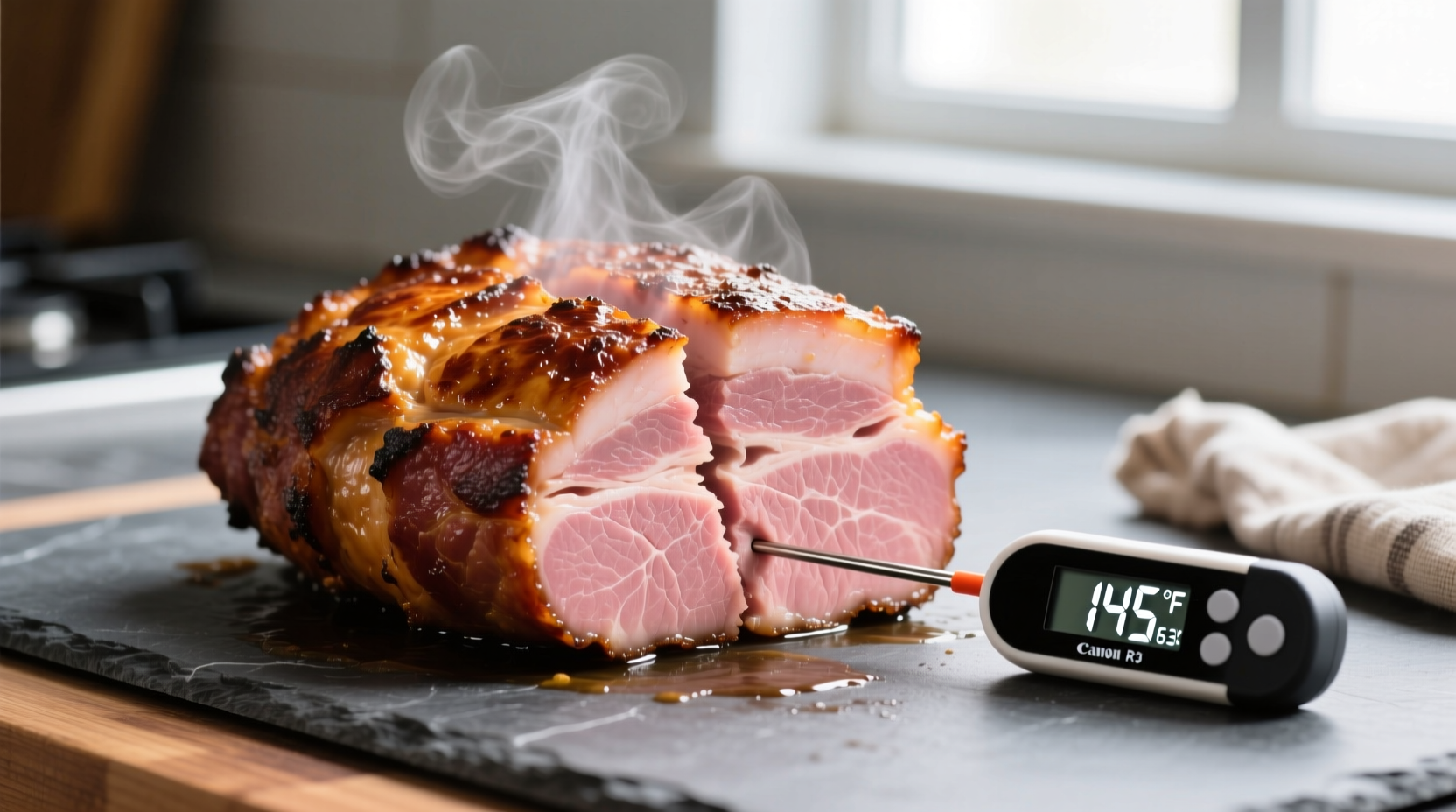Nothing ruins a special meal like improperly cooked ham. Getting the timing right for a butt ham—whether you're preparing Sunday dinner or planning your holiday feast—is crucial for achieving that perfect balance of juicy tenderness and rich flavor. This guide delivers precise cooking times based on weight, temperature, and desired texture, so you can serve perfectly cooked ham every time.
Butt Ham Cooking Time Reference Guide
| Ham Weight | Target Internal Temp | Approximate Cooking Time | Texture Result |
|---|---|---|---|
| 4-6 lbs | 185°F (85°C) | 2-3 hours | Sliceable |
| 6-8 lbs | 185°F (85°C) | 3-4 hours | Sliceable |
| 8-10 lbs | 185°F (85°C) | 4-5 hours | Sliceable |
| 4-10 lbs | 195-205°F (90-96°C) | 1.5-1.75 hours per pound | Pullable |
Factors That Impact Butt Ham Cooking Time
While the basic formula of 30-45 minutes per pound at 325°F provides a solid starting point, several variables affect your actual cooking time. Understanding these will help you adjust expectations and avoid common mistakes when determining how long to cook a butt ham properly.
Starting Temperature Matters
Removing your ham from the refrigerator 30-60 minutes before cooking allows it to reach room temperature, reducing overall cooking time by 15-20%. A chilled ham straight from the fridge requires additional time to cook through evenly, potentially adding 20-30 minutes to your total cooking time for a standard 8-pound cut.
Bone-In vs. Boneless Variations
Bone-in butt hams generally require 10-15% more cooking time than boneless cuts of the same weight. The bone conducts heat differently, creating a more gradual temperature rise in the surrounding meat. For precise results when calculating how long to cook a bone-in butt ham, add approximately 5 minutes per pound to your estimated time.
Oven Type and Accuracy
Convection ovens cook approximately 25% faster than conventional ovens due to circulating hot air. If using a convection setting, reduce your estimated cooking time by one-quarter. Always verify your oven temperature with an independent oven thermometer—many home ovens have calibration issues that can throw off your cooking time calculations by 25°F or more.

Step-by-Step Cooking Process
Preparation Essentials
Before you even consider how long to cook a butt ham, proper preparation sets the stage for success. Pat the surface dry with paper towels to ensure proper browning. Score the fat cap in a diamond pattern, being careful not to cut too deeply into the meat. Apply your preferred rub, allowing at least 30 minutes for flavors to penetrate before cooking.
Monitoring Progress
Insert an oven-safe meat thermometer into the thickest part of the ham, avoiding bone. Check temperature readings starting at the 2-hour mark for smaller hams (4-6 lbs) or at the 3.5-hour mark for larger cuts (8-10 lbs). The most critical phase occurs between 160-190°F (71-88°C), where the meat experiences the "stall"—a period where temperature stops rising as moisture evaporates from the surface.
The Resting Imperative
Never skip the resting period after determining how long to cook a butt ham! Remove the ham from the oven when it reaches 5-10°F below your target temperature (carryover cooking will raise it during rest). Tent loosely with foil and let rest for 15-30 minutes (15 minutes per pound) before slicing or pulling. This allows juices to redistribute throughout the meat.
Food Safety Considerations for Butt Ham
According to the USDA Food Safety and Inspection Service, pork should reach a minimum internal temperature of 145°F with a 3-minute rest for safety. However, butt ham requires higher temperatures for proper texture development. The extended cooking time necessary to reach 185-205°F ensures food safety while transforming tough connective tissues into gelatin. Always verify doneness with a calibrated meat thermometer rather than relying solely on time estimates.
Troubleshooting Common Cooking Issues
When Your Ham Is Cooking Too Slowly
If your ham isn't progressing through temperature zones as expected, check your oven calibration and thermometer accuracy. A common issue when determining how long to cook a butt ham is an oven running cooler than indicated. Consider wrapping the ham in foil after the initial browning phase to accelerate cooking while maintaining moisture.
Dealing with Uneven Cooking
Rotate the ham periodically during cooking to ensure even heat exposure. If one side is browning too quickly, rotate the pan or shield that area with foil. For larger cuts, position the ham with the thicker end toward the back of the oven where heat typically concentrates.
Frequently Asked Questions
How long to cook a 7-pound butt ham at 325°F?
A 7-pound butt ham requires approximately 3.5-4.5 hours at 325°F to reach 185°F for slicing, or 5.25-6.25 hours to reach 200°F for pulling. Always verify with a meat thermometer rather than relying solely on time.
Should I cover my butt ham while cooking?
Covering isn't necessary for the entire cooking process. For the first 2-3 hours, leave uncovered to develop a flavorful crust. If the surface becomes too dark or the cooking progresses too slowly, cover loosely with foil for the remainder of the cooking time.
Why is my butt ham taking longer than expected to cook?
Several factors could cause extended cooking times: an oven running cooler than indicated, starting with a thoroughly chilled ham, or inaccurate thermometer readings. Verify your oven temperature with a separate thermometer and ensure your meat thermometer is properly inserted into the thickest part of the meat.
Can I cook a butt ham at a higher temperature to reduce cooking time?
While you can increase the temperature to 350°F, this risks drying out the exterior before the interior reaches proper temperature. The low-and-slow method (275-325°F) allows connective tissues to break down gradually without excessive moisture loss, resulting in more tender meat.











 浙公网安备
33010002000092号
浙公网安备
33010002000092号 浙B2-20120091-4
浙B2-20120091-4